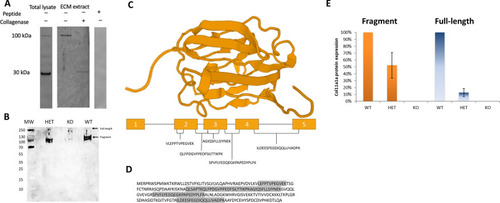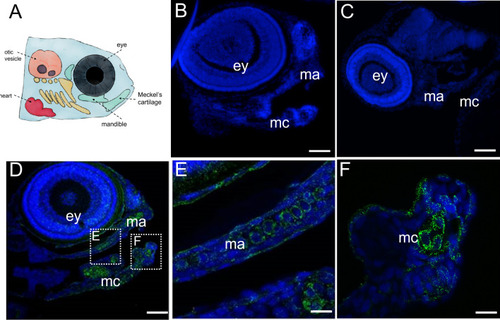- Title
-
Authentication of a novel antibody to zebrafish collagen type XI alpha 1 chain (Col11a1a)
- Authors
- Reeck, J.C., Hardy, M.J., Pu, X., Keller-Peck, C., Oxford, J.T.
- Source
- Full text @ BMC Res. Notes
|
Model of Collagen type XI. |
|
Antibody detection of Col11a1a protein by immunoblot and confirmed by mass spectrometry. EXPRESSION / LABELING:
PHENOTYPE:
|
|
Immunohistochemistry demonstrating location of Col11a1a within developing craniofacial region at 72 hpf. Wildtype zebrafish embryos were fixed, embedded, and sectioned for immunofluorescence detection of Col11a1a using the new primary antibody. EXPRESSION / LABELING:
|



